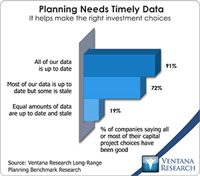
Planview recently announced general availability of Planview Enterprise 11. The new release enhances the user experience through a comprehensive redesign of the interface to promote ease of use. The changes are intended to facilitate an integrated approach to long-range planning of capital projects and major corporate initiatives across departments. There’s an important difference between strategic and long-range planning, and this difference is the reason why long-range planning benefits from...
Topics: Big Data, Performance Management, Planning, Sales Performance, Supply Chain Performance, Office of Finance, Planview, Reporting, FEI, FERF CEO, Operational Performance, Business Performance, Financial Performance, CFO, Financial Performance Management, FPM








